Home> Company News> Optimizing Machinery Support: The Role of Split Plummer Block Housings
- AddressTianqiao, Beiyuan District, Jinan,Shandong
- Worktime9:00-18:00(Beijing time)
- Phone(Working Time)0531-8299 9953
Split plummer block housings play a pivotal role in ensuring the stability, alignment, and longevity of machinery support systems. These essential components form the backbone of various industrial applications, offering a reliable solution for supporting heavy loads and minimizing equipment wear and tear. In this comprehensive exploration, we delve into the critical role of split plummer block housings, their significance in maintaining machinery, and the multifaceted advantages they bring to the table.
The Crucial Role of Split Plummer Block Housings
At the heart of machinery support systems lie split plummer block housings. These robust structures are designed to house bearings securely, providing a stable platform for rotating equipment components. Their primary function is to distribute the loads imposed on the bearing, ensuring that machinery operates smoothly and efficiently.
Maintaining Equipment Stability and Alignment
Machinery stability and alignment are paramount in preventing premature wear and optimizing performance. Split plummer block housings are meticulously engineered to maintain the alignment of rotating equipment, reducing the risk of misalignment-related issues such as vibration, noise, and reduced lifespan.
Paving the Way for Longevity
One of the standout features of split plummer block housings is their ability to extend the operational life of machinery. By evenly distributing loads, reducing stress on components, and providing efficient lubrication, these housings contribute significantly to machinery longevity.
Exploring the Aims of This Exploration
As we embark on this journey to uncover the world of split plummer block housings, our goal is to provide a comprehensive understanding of their significance, design, construction, applications, and the advantages they offer. In the following sections, we will delve deeper into the intricacies of these critical components, shedding light on their pivotal role in optimizing machinery support.

Design and Construction
To truly understand the role of split plummer block housings in optimizing machinery support, it's crucial to delve into the intricacies of their design and construction. we will explore the design principles that underpin split plummer block housings, dissect their various components, and gain insights into the diverse types and variations available in the market.
Design Principles of Split Plummer Block Housings
At the heart of every split plummer block housing is a carefully crafted design that ensures the housing can withstand the demands of heavy machinery and extreme operating conditions. These design principles include:
|
Robust Housing Body |
The housing body is the foundation of a split plummer block housing. It is typically manufactured from durable materials like cast iron or steel. The robust housing body provides the structural integrity required to support heavy loads and maintain stability. |
|
Secure Cap Fastening |
Split plummer block housings consist of two halves, each with its own cap. Secure cap fastening mechanisms, such as bolts or clamps, are used to ensure that both halves are firmly held together. This design feature allows for easy assembly, disassembly, and maintenance. |
|
Efficient Sealing |
Effective sealing is essential to protect the housed bearings from contaminants and maintain proper lubrication. Split plummer block housings are equipped with seals that provide a barrier against dust, moisture, and other harmful elements. This sealing ensures the longevity of the housed bearings. |
|
Lubrication System |
Proper lubrication is critical for the smooth operation of bearings within split plummer block housings. These housings are designed to accommodate various lubrication systems, including grease and oil lubrication. The choice of lubrication method depends on the specific application and operational requirements. |
Components of Split Plummer Block Housings
Split plummer block housings consist of several key components, each playing a vital role in their functionality:
- Housing Body: The main structural component that supports the weight of the machinery and bearings.
- Caps: The two halves of the housing that enclose the bearing and provide access for maintenance.
- Seals: Designed to prevent contamination and retain lubrication within the housing.
- Lubrication Ports: Openings or channels that facilitate the introduction of lubricants into the housing.
Types and Variations of Split Plummer Block Housings
The world of split plummer block housings is diverse, with various types and variations tailored to specific applications and industries. These include:
- Pillow Block Housings: Known for their versatility and ease of installation, pillow block housings are widely used in conveyor systems, fans, and pumps.
- Flanged Housings: Flanged housings are ideal for applications where space constraints are a concern. They are commonly used in agricultural machinery and material handling equipment.
- Take-Up Housings: Take-up housings are designed for applications where the distance between shaft ends needs to be adjusted. They are prevalent in conveyor belt tensioning systems.
- Cartridge Housings: Cartridge housings simplify bearing replacement and maintenance, making them suitable for industries like mining and aggregates.
In Conclusion
Understanding the design and construction of split plummer block housings is fundamental to recognizing their crucial role in optimizing machinery support. These housings are not only built to withstand demanding conditions but also offer versatility and adaptability through various types and configurations.
Applications Across Industries
In our quest to understand the role of split plummer block housings in optimizing machinery support, it's essential to explore the wide array of industries that depend on these components. Split plummer block housings play a pivotal role in various applications, contributing to enhanced equipment reliability and performance. we will delve into specific examples of how split plummer block housings are employed across diverse industries, showcasing their versatility and effectiveness.
Conveyor Systems
Conveyor systemsare the lifeblood of industries such as manufacturing, logistics, and warehousing. They facilitate the seamless movement of goods and materials, ensuring efficient production processes. Split plummer block housings find their place in conveyor systems by providing reliable support for conveyor belt pulleys and rollers. Their robust construction and easy maintenance make them an ideal choice for these applications. The benefits of using split plummer block housings in conveyor systems include reduced downtime, lower maintenance costs, and extended equipment life.
Pumps and Fluid Handling
Pumpsare a critical component in industries ranging from water treatment to oil and gas. Split plummer block housings are frequently employed to support the shafts and bearings within pumps. Their design ensures that the rotating elements of pumps are adequately supported, reducing vibration and wear. This results in increased pump efficiency, longer service life, and minimized unplanned downtime. Whether it's a centrifugal pump in a municipal water treatment plant or a large-scale industrial pump, split plummer block housings play a vital role in maintaining optimal performance.
Heavy Machinery and Mining
In the world of heavy machinery and mining, reliability and durability are paramount. Heavy machineryused in construction, mining, and excavation must endure extreme conditions and heavy loads. Split plummer block housings are trusted to provide support for components like pulleys, drums, and bearings in these rugged applications. Their robust design ensures that heavy machinery can operate smoothly and efficiently, even in the harshest environments. The use of split plummer block housings translates to reduced maintenance costs, increased uptime, and enhanced safety.
Paper and Pulp Industry
The paper and pulp industryrelies on precision machinery to transform raw materials into paper products. Split plummer block housings are integral to this process by supporting the rollers and bearings in paper machines. The precise design and construction of these housings contribute to the smooth operation of the machines, enabling the production of high-quality paper products. Additionally, split plummer block housings make maintenance and replacement of components more straightforward, minimizing production disruptions.
Benefits Across Industries
The common thread across these diverse industries is the recognition of the benefits provided by split plummer block housings:
- Enhanced Reliability: Split plummer block housings contribute to machinery support, reducing wear and tear, and ensuring reliable operation.
- Increased Performance: By reducing vibration and maintaining proper alignment, these housings enhance the overall performance of machinery.
- Cost Savings: Reduced downtime, lower maintenance costs, and extended equipment life translate into significant cost savings for industries.
In conclusion, split plummer block housings have a far-reaching impact on various industries, from conveyor systems and pumps to heavy machinery and paper production. Their role in machinery support cannot be understated, as they consistently deliver reliability, performance, and cost-efficiency across diverse applications. In the next section, we will address common questions and provide answers to help readers gain a comprehensive understanding of these essential components.
Installation and Maintenance
In our exploration of split plummer block housings and their pivotal role in optimizing machinery support, it is crucial to delve into the practical aspects of their installation and maintenance. Proper installation and regular maintenance are fundamental to ensuring the longevity and reliable performance of these components. This section provides a comprehensive guide on the installation process, maintenance best practices, and strategies for monitoring and addressing wear and tear in industrial environments.
Installation Process
Preparation
Before installing split plummer block housings, it is essential to ensure that the mounting surface is clean and free from any debris or contaminants. Any irregularities or roughness on the mounting surface should be addressed to achieve proper alignment.
Alignment
Achieving accurate alignment is critical for the successful installation of split plummer block housings. Misalignment can lead to premature wear and reduced equipment lifespan. Use precision tools and follow manufacturer specifications for alignment. Laser alignment tools can be particularly useful in this regard.
Torque Specifications
To secure split plummer block housings in place, it is crucial to adhere to the recommended torque specifications provided by the manufacturer. Over-tightening or under-tightening can lead to issues, so following these specifications precisely is essential.
Maintenance Best Practices
Regular Inspection
Scheduled inspections of split plummer block housings are vital to detect any signs of wear, misalignment, or lubrication issues. Visual inspections should include checking for cracks, corrosion, or excessive vibration.
Lubrication
Proper lubrication is crucial to reduce friction and heat generation within split plummer block housings. Follow the manufacturer's recommendations regarding the type and quantity of lubricant. Regularly monitor lubricant levels and replenish as needed.
Cleaning
Maintain a clean environment around split plummer block housings to prevent the ingress of contaminants. Regularly clean the housing and seals to ensure optimal performance.
Wear and Tear Monitoring
Implement a proactive monitoring system to track the condition of split plummer block housings. Vibration analysis, temperature monitoring, and regular inspections can help identify issues early, allowing for timely maintenance.
Addressing Wear and Tear
Replacement Parts
If wear and tear are detected during inspections, it is essential to have replacement parts readily available. Ensure that replacement components meet the manufacturer's specifications and quality standards.
Timely Maintenance
Address any identified issues promptly to prevent further damage. Timely maintenance can significantly extend the lifespan of split plummer block housings and minimize downtime.
Conclusion
Proper installation and maintenance of split plummer block housings are integral to their role in optimizing machinery support. By following precise installation procedures, adhering to maintenance best practices, and implementing proactive monitoring systems, industries can harness the full potential of these components. The result is enhanced equipment reliability, extended service life, and reduced operational costs. As we conclude our exploration of split plummer block housings, we encourage industries to prioritize these crucial aspects to ensure the seamless operation of their machinery and equipment.
Advantages and Limitations
As we delve deeper into the realm of split plummer block housings, it's crucial to examine the advantages they offer in optimizing machinery support while also acknowledging their potential limitations and challenges. we will provide a comprehensive analysis of the benefits, potential drawbacks, and a comparison with alternative bearing support systems.
Advantages of Split Plummer Block Housings
Ease of Installation
One of the most significant advantages of split plummer block housings is their user-friendly design. Unlike solid housings, these split versions can be easily assembled and disassembled, simplifying installation and maintenance processes. This ease of installation saves both time and labor costs.
Accessibility for Maintenance
Split plummer block housings allow convenient access to the bearing and other internal components without the need to dismount the entire housing. This feature streamlines maintenance procedures, reducing downtime and enhancing overall operational efficiency.
Versatility in Applications
These housings are highly versatile and can accommodate various types of bearings, including ball bearings, spherical roller bearings, and tapered roller bearings. Their compatibility with different bearing types makes them suitable for a wide range of applications across industries.
Temperature Management
Split plummer block housings are designed with temperature management in mind. They can efficiently dissipate heat generated during operation, contributing to prolonged bearing life and reduced maintenance needs.
Cost-Effective Solutions
Their ease of installation, maintenance accessibility, and versatility make split plummer block housings cost-effective solutions for machinery support. Industries benefit from reduced installation and maintenance expenses over the long term.
Limitations and Challenges
Initial Cost
While split plummer block housings offer long-term cost savings, their initial purchase cost can be higher than that of solid housings. Organizations need to consider this upfront investment when evaluating their options.
Precision and Alignment
Achieving precise alignment during installation is crucial for split plummer block housings. Any misalignment can lead to premature wear and reduced efficiency. Proper alignment requires precision tools and expertise.
Environmental Conditions
In certain harsh environmental conditions, such as extreme temperatures or corrosive atmospheres, the performance of split plummer block housings may be affected. Users must assess the suitability of these housings for their specific operating environment.
Comparison with Alternative Bearing Support Systems
To gain a holistic perspective on the role of split plummer block housings, it's essential to compare them with alternative bearing support systems. Solid plummer block housings, pillow block bearings, and flange units are common alternatives. Each system has its advantages and limitations, making the choice dependent on specific application requirements and operating conditions.
In conclusion, split plummer block housings offer several advantages, including ease of installation, maintenance accessibility, versatility, temperature management, and cost-effectiveness. However, users must be mindful of potential limitations and challenges, such as initial costs, precision requirements, and environmental considerations. When selecting a bearing support system, a thorough evaluation of the application's needs is essential to make an informed decision. Whether for heavy machinery, conveyor systems, or other industrial applications, split plummer block housings continue to play a vital role in optimizing machinery support.
Advantages and Limitations
As we delve deeper into the realm of split plummer block housings, it's crucial to examine the advantages they offer in optimizing machinery support while also acknowledging their potential limitations and challenges. we will provide a comprehensive analysis of the benefits, potential drawbacks, and a comparison with alternative bearing support systems.
Advantages of Split Plummer Block Housings
Ease of Installation
One of the most significant advantages of split plummer block housings is their user-friendly design. Unlike solid housings, these split versions can be easily assembled and disassembled, simplifying installation and maintenance processes. This ease of installation saves both time and labor costs.
Accessibility for Maintenance
Split plummer block housings allow convenient access to the bearing and other internal components without the need to dismount the entire housing. This feature streamlines maintenance procedures, reducing downtime and enhancing overall operational efficiency.
Versatility in Applications
These housings are highly versatile and can accommodate various types of bearings, including ball bearings, spherical roller bearings, and tapered roller bearings. Their compatibility with different bearing types makes them suitable for a wide range of applications across industries.
Temperature Management
Split plummer block housings are designed with temperature management in mind. They can efficiently dissipate heat generated during operation, contributing to prolonged bearing life and reduced maintenance needs.
Cost-Effective Solutions
Their ease of installation, maintenance accessibility, and versatility make split plummer block housings cost-effective solutions for machinery support. Industries benefit from reduced installation and maintenance expenses over the long term.
Limitations and Challenges
|
Initial Cost
|
While split plummer block housings offer long-term cost savings, their initial purchase cost can be higher than that of solid housings. Organizations need to consider this upfront investment when evaluating their options. |
|
Precision and Alignment |
Achieving precise alignment during installation is crucial for split plummer block housings. Any misalignment can lead to premature wear and reduced efficiency. Proper alignment requires precision tools and expertise. |
|
Environmental Conditions |
n certain harsh environmental conditions, such as extreme temperatures or corrosive atmospheres, the performance of split plummer block housings may be affected. Users must assess the suitability of these housings for their specific operating environment. |
Comparison with Alternative Bearing Support Systems
To gain a holistic perspective on the role of split plummer block housings, it's essential to compare them with alternative bearing support systems. Solid plummer block housings, pillow block bearings, and flange units are common alternatives. Each system has its advantages and limitations, making the choice dependent on specific application requirements and operating conditions.
In conclusion, split plummer block housings offer several advantages, including ease of installation, maintenance accessibility, versatility, temperature management, and cost-effectiveness. However, users must be mindful of potential limitations and challenges, such as initial costs, precision requirements, and environmental considerations. When selecting a bearing support system, a thorough evaluation of the application's needs is essential to make an informed decision. Whether for heavy machinery, conveyor systems, or other industrial applications, split plummer block housings continue to play a vital role in optimizing machinery support.

Conclusion
In conclusion, we have embarked on a journey to explore the pivotal role that split plummer block housings play in optimizing machinery support. Throughout this article, we have delved into their design and construction, applications across industries, installation and maintenance processes, and the advantages and limitations they offer.
Central Role in Machinery Support
Split plummer block housings have proven to be indispensable components in the world of machinery. Their ability to provide stability, alignment, and longevity to equipment is unmatched. As we've seen, their ease of installation and accessibility for maintenance contribute significantly to their widespread use.
Exploring Diverse Applications
The versatility of split plummer block housings shines through as we explore their applications across various industries. From conveyor systems to pumps and heavy machinery, these housings have found their place in enhancing equipment reliability and performance.
Installation, Maintenance, and Efficiency
Our detailed examination of the installation process, maintenance best practices, and strategies for monitoring wear and tear has highlighted the importance of proper care. By adhering to these guidelines, industries can maximize the efficiency and operational lifespan of their machinery.
Advantages and Considerations
We've uncovered the advantages of split plummer block housings, including ease of installation, maintenance accessibility, versatility, temperature management, and cost-effectiveness. However, it's essential to remain mindful of their initial cost, precision and alignment requirements, and compatibility with specific environmental conditions.
Encouragement for Industries
As we conclude, we encourage industries to delve further into the benefits that split plummer block housings offer. Their central role in enhancing machinery reliability and performance should not be underestimated. By incorporating these components into their machinery support systems, industries can reduce downtime, improve efficiency, and ultimately thrive in today's competitive landscape.
In a world where machinery support is paramount, split plummer block housings stand as a testament to innovation and excellence. They continue to pave the way for optimized machinery performance and are sure to remain a critical element in the industrial landscape.
FAQs: Common Questions About Split Plummer Block Housings
As we conclude our exploration of split plummer block housings and their vital role in optimizing machinery support, it's essential to address some frequently asked questions regarding these components. we will provide clear and informative answers to common queries, helping you gain a better understanding of their use, advantages, and maintenance.
What Are Split Plummer Block Housings, and How Do They Work?
Split plummer block housings are specialized enclosures designed to support bearings in machinery. They consist of two halves that can be easily separated, allowing for straightforward installation and maintenance. These housings provide stability, alignment, and protection to the bearings, ensuring the machinery's smooth operation.
What Types of Bearings Are Compatible with Split Plummer Block Housings?
Split plummer block housings are versatile and can accommodate various types of bearings, including ball bearings, spherical roller bearings, and cylindrical roller bearings. The choice of bearing depends on the specific requirements and load conditions of the machinery.
What Are the Key Advantages of Using Split Plummer Block Housings?
Split plummer block housings offer several advantages, including:
- Ease of Installation:Their split design simplifies the installation process.
- Accessibility for Maintenance:They can be disassembled for maintenance without removing other components.
- Alignment:They ensure precise bearing alignment, reducing wear and tear.
- Temperature Management:They facilitate efficient cooling and heat dissipation.
- Cost-Effectiveness:Their long lifespan and reduced downtime make them cost-effective in the long run.
Are There Any Limitations or Considerations When Using Split Plummer Block Housings?
While split plummer block housings have numerous benefits, it's important to consider factors such as their initial cost, precision and alignment requirements during installation, and compatibility with specific environmental conditions. Additionally, proper lubrication and maintenance are essential for optimal performance.
Can Split Plummer Block Housings Be Used in Various Industries?
Absolutely. Split plummer block housings are widely used in various industries, including mining, manufacturing, agriculture, and more. They are suitable for applications such as conveyor systems, pumps, crushers, and heavy machinery, where reliable support is crucial.
How Can I Ensure the Longevity of Split Plummer Block Housings?
Ensuring the longevity of split plummer block housings involves following best practices for maintenance, including regular lubrication, inspection, and monitoring for wear and tear. Proper alignment during installation is also critical. By adhering to these guidelines, you can maximize their operational lifespan.
Are There Any Innovations in Split Plummer Block Housing Technology?
Yes, advancements in materials, design, and smart technology are shaping the future of split plummer block housings. Innovations such as improved materials for increased load-bearing capacity, precision engineering, and smart housings with monitoring capabilities are on the horizon.
Conclusion
we've addressed common questions about split plummer block housings, shedding light on their features, benefits, and considerations. As industries continue to rely on these components for machinery support, having a clear understanding of their use and maintenance is essential for optimizing machinery performance and reliability.


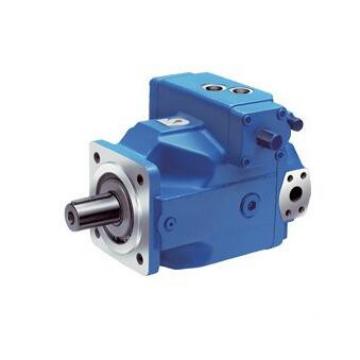 USA VICKERS Pump PVH131R13AF30B252000002001AB010A
USA VICKERS Pump PVH131R13AF30B252000002001AB010A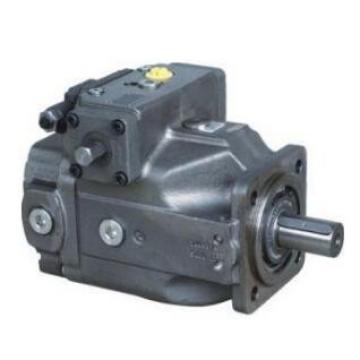 Parker Piston Pump 400481002108 PV140R1K1B4NWLZ+PGP517A0
Parker Piston Pump 400481002108 PV140R1K1B4NWLZ+PGP517A0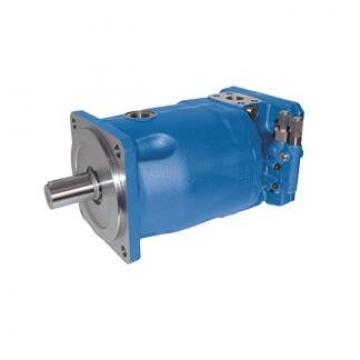 Parker Piston Pump 400481003286 PV180R1K1A4NYCD+PGP511A0
Parker Piston Pump 400481003286 PV180R1K1A4NYCD+PGP511A0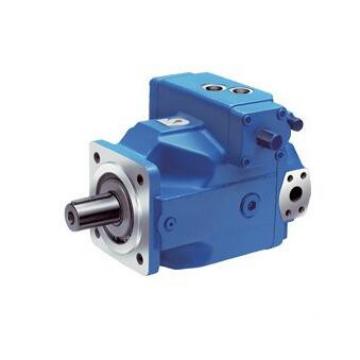 USA VICKERS Pump PVH057R02AA10B25200000100100010A
USA VICKERS Pump PVH057R02AA10B25200000100100010A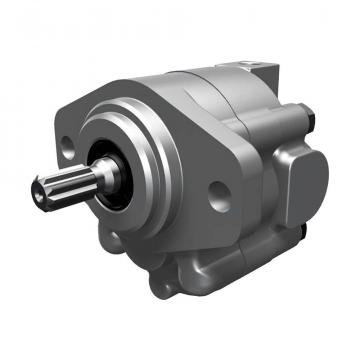 Parker Piston Pump 400481004166 PV270R9K1B4NYLZK0033+PVA
Parker Piston Pump 400481004166 PV270R9K1B4NYLZK0033+PVA